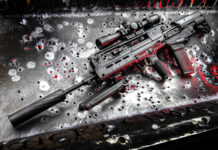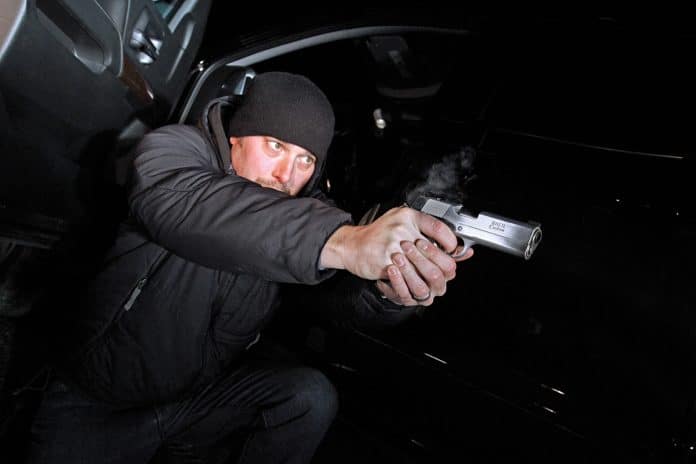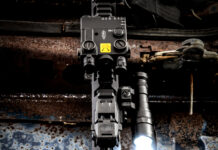by Massad Ayoob
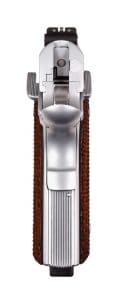 When Colt came out with their CCO pistol in the 1990s, the 4.25” Commander barrel/slide assembly atop the short Officers ACP frame, Ray Ordorica wrote that he considered it the ideal 1911 .45 auto for concealed carry. I’ve never found a good argument against that, and soon found myself with a pair of the aluminum frame CCOs in my own gun safe. Later, I found that the Nighthawk Custom’s similar T3 in its original steel frame format shot even better than the lightweight Colts, and took the T3 to New York during the dark couple of years between when that state’s oxymoronically named SAFE Act limited handgunners to 7-round capacity, and when the Second Circuit Court of Appeals shot that down just recently. Thus, I could certainly understand the rationale of the all-steel Les Baer Stinger 1911 with 4.25” barrel and short butt that On Target recently sent me to test.
When Colt came out with their CCO pistol in the 1990s, the 4.25” Commander barrel/slide assembly atop the short Officers ACP frame, Ray Ordorica wrote that he considered it the ideal 1911 .45 auto for concealed carry. I’ve never found a good argument against that, and soon found myself with a pair of the aluminum frame CCOs in my own gun safe. Later, I found that the Nighthawk Custom’s similar T3 in its original steel frame format shot even better than the lightweight Colts, and took the T3 to New York during the dark couple of years between when that state’s oxymoronically named SAFE Act limited handgunners to 7-round capacity, and when the Second Circuit Court of Appeals shot that down just recently. Thus, I could certainly understand the rationale of the all-steel Les Baer Stinger 1911 with 4.25” barrel and short butt that On Target recently sent me to test.
When Colt came out with their CCO pistol in the 1990s, the 4.25” Commander barrel/slide assembly atop the short Officers ACP frame, Ray Ordorica wrote that he considered it the ideal 1911 .45 auto for concealed carry. I’ve never found a good argument against that, and soon found myself with a pair of the aluminum frame CCOs in my own gun safe. Later, I found that the Nighthawk Custom’s similar T3 in its original steel frame format shot even better than the lightweight Colts, and took the T3 to New York during the dark couple of years between when that state’s oxymoronically named SAFE Act limited handgunners to 7-round capacity, and when the Second Circuit Court of Appeals shot that down just recently. Thus, I could certainly understand the rationale of the all-steel Les Baer Stinger 1911 with 4.25” barrel and short butt that On Target recently sent me to test.
Overview
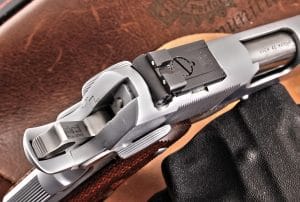
The Stinger has been out for a while; what’s new for it is its Monolith configuration with a heavy frame dust cover and a slide design that says, “If you called the original 1911 ‘old slab-sides,’ you ain’t seen nothing yet.” Les Baer himself told me the reason for his long-established Monolith design being adapted to this shorter gun was to bring weight up to 36 to 37 ounces to reduce muzzle jump. A conventional John Browning style recoil spring guide and plug are used, and there are no grasping grooves at the front of the slide: I’ll side with Les on both of those decisions. Low-profile Rolo adjustable sights include Tritium inserts from Trijicon, front and rear. Thumb safety is ambidextrous, with the lever on the right side being lower profile than the one on the left. Our test sample was hard chromed.
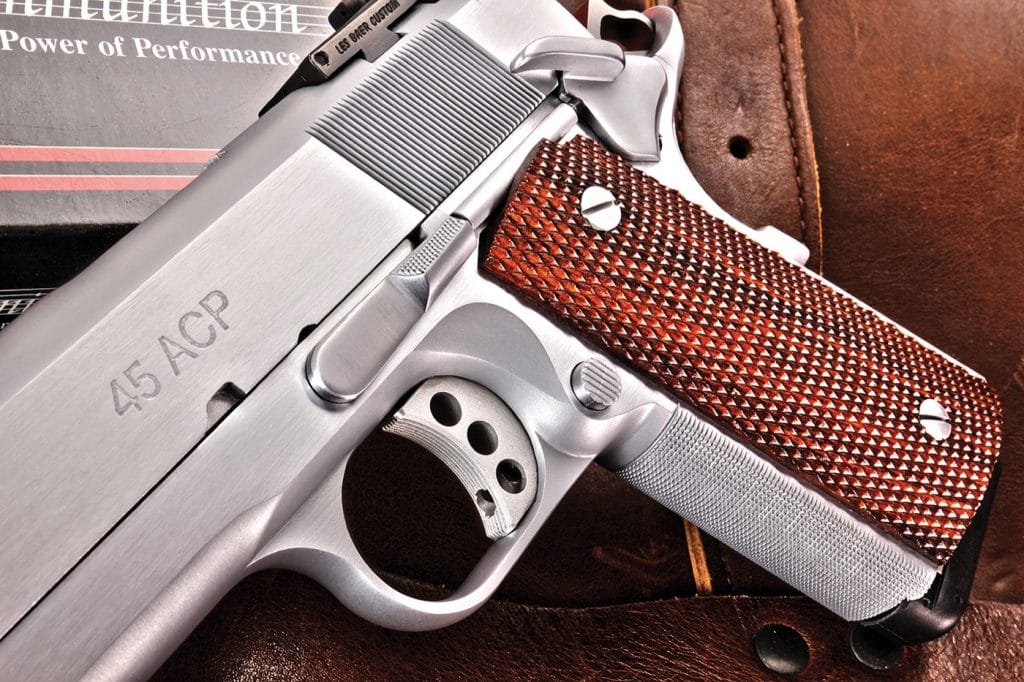
On the Lyman digital trigger pull scale from Brownell’s, pull weight averaged five pounds, 7.3 ounces. This is a good “street trigger pull” range that won’t sustain a “negligent hair trigger leading to indefensible unintended discharge” accusation, but still gives the shooter good control in rapid fire and, as we shall see shortly, in precise shooting.
You don’t want to carry a loaded pistol that’s not “drop-safe.” Les Baer told me that this pistol is drop-safe to twelve feet, thanks to an extra-heavy duty firing pin spring. I appreciate him paying attention to this important feature. Anyone who says “real professionals never drop their guns” hasn’t been in plainclothes holding a gun on a malefactor when uniformed cops who don’t know who’s who roll up, and more or less order the guy with the gun to drop the pistol or die.
Accuracy
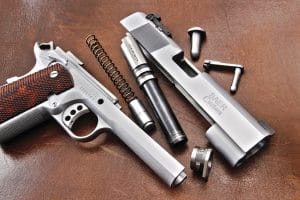
I put the Stinger Monolith through my usual test for precision shooting capability: Matrix rest on a concrete bench at 25 yards, hand-held. Each group was measured once for all five shots (center to center of the farthest-flung bullet holes, to the nearest 0.05”) and then again for the best three. The decades have shown me that this second measurement, if an experienced shooter is behind the gun and has not “called any flyers,” will generally equal what the same gun and ammo will do from a machine rest with all five shots. It’s much easier for the average reader to compare on his own without purchasing a machine rest.
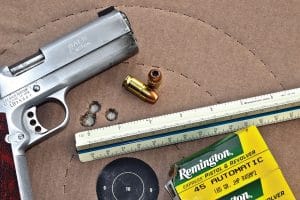
Ammo will be listed in alphabetical order. Atlanta Arms 230-grain TMJ (total metal jacket) round nose .45 ACP is low-priced, but accurate enough that it has won me a gun or two in competition over the years. From the Stinger, it put five shots 1.70” apart, with the best three in 1.15”. This compares favorably with the average 2-inch, 5-shot groups I’ve achieved in the past with my Colt CCOs.
Page 2










